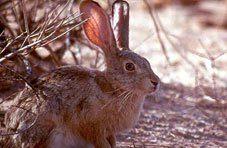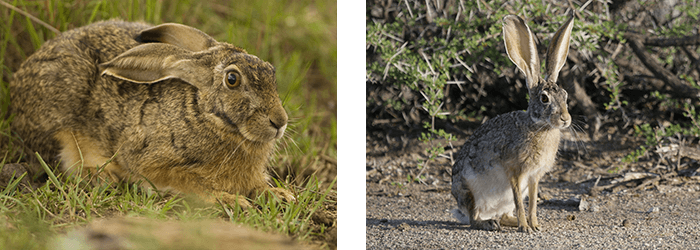Enjoy your time at Springbok Casino
South African Bunnies: The Cape Hare

Let’s start our story with a wide-spread and abundant species, the Cape Hare. While today it’s widely distributed in the western and central regions of South Africa, the original specimen actually came from the Cape of Good Hope. Cape Hare is a picture-perfect representative of the bunny every kid will recognise, with the long ears and large eyes, long back legs and a small fluffy tail, light brown to reddish in colour. As is the case with many of its relatives, female hares are larger and heavier than their male companions.
While not that picky when it comes to food, if given a choice this little herbivore will always opt to chew on green grass. Where it’s different to other hares is its ability to drink more saline water. Cape Hare is also capable of radiating heat through its large ears. Females can have as many as 4 litters yearly, each time giving birth to 1-3 young, called leverets. What differentiates hares from rabbits is that their young are born with open eyes and can move around soon after birth.

The usual life span of the Cape Hare is only 1-2 years, and during its short existence the animal faces many natural predators, such as caracal and jackal. Hares can run very fast, the only enemy capable of outrunning them being cheetah. Leopards and the other predators are normally ambush hunters. When it feels threatened, Cape Hare remains motionless until the very last moment, and then it will suddenly leap out of its cover and rely on its speed to escape unharmed. If caught, it will produce a loud squealing sound, use its large back legs to deliver a vicious kick or even bite if given the opportunity. Grinding their teeth together produces a warning noise, and they will also communicate by stamping of their feet. When two males fight (which often means there is an interested female near by), they will stand on their back legs and slash each other with the claws of their front feet.
Cape Hare is a nocturnal animal, so while they’ll be hopping around during the night, days will be spent resting in shallow depressions. Some say that each day the hare will return to the same sleeping spot and take up the exact same sleeping position. It’s only when it feels in danger that it will look for an alternative refuge in the burrow of some other animal. Perhaps we don’t know as much as we’d like to about this little creatures as the excellent vision and acute hearing, enabled by large eyes and ears, allow them to spot us far sooner than we can see them.
Although the species is not considered to be endangered, any of dozen known subspecies could face a risk of extinction due to urban developments and habitat loss, increased use of pesticides, hunting and climate change. Hopefully we’ll learn to treat nature and its inhabitants better, and keep our little furry friends around for a long, long time.



